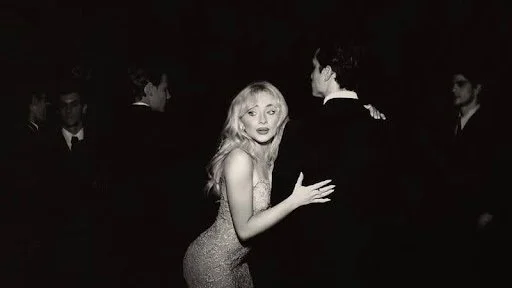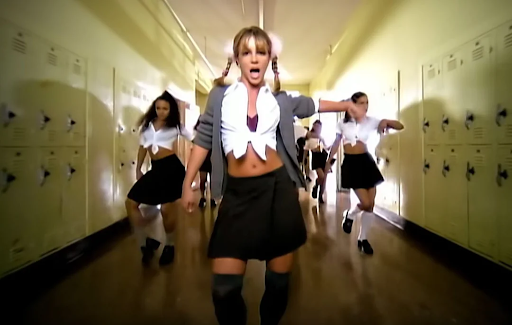Pop Star Fashion & Feminist Flair — The Man’s Best Friend Debate. Yay or Nay?
Darlings, I have been summoned due to drama! The drama unfortunately isn’t coming within the fashion industry… oh no, however, I can assure you that my fellow writers will feed you with the needed gist. Now, don’t be confused, I will always voice my opinions and knowledge about the fashion of our esteemed celebrities, of whom I do not know personally—for your own entertainment, of course. Enough yapping, the cry for help is coming within the music industry between raging feminists and pop star’s apologists.How could I have ignored all this noise? Sabrina Carpenter, are you okay?
Sabrina Carpenter’s “Man’s Best Friend”: Satire or Regression?
Sabrina Carpenter’s upcoming album Man’s Best Friend launched more than just music; it ignited a full-blown fashion discourse. The original album cover, depicting her on all fours in a black mini-dress and heels, hair being gently tugged by an unseen man, stirred passionate reactions. Critics, including Glasgow Women’s Aid, slammed it as “regressive” and pandering to the male gaze, an image uncomfortably reminiscent of domestic power imbalances. For many, this wasn’t edgy feminism, it was a throwback to outdated tropes that reduce women to props.
But Carpenter insists it’s satire: a biting commentary on how women are objectified, infantilized, and treated like “man’s best friend,” toxic masculinity crash-landed into pop culture. In her own words, it’s purposefully uncomfortable, “provocative and parody,” not pandering. She even leaned into the firestorm and cheekily released an alternate “approved by God” cover featuring her arm-in-arm with a suited man. The move reframed the debate—was it a feminist reclamation or just marketing risk management?
Photo: Instagram
So, is she pushing feminism backwards or is public outrage clouding nuance? The backlash shows a cultural disconnect; satire requires literacy and context, both of which are often lost in headline-chasing headlines. Carpenter’s supporters argue this provocation is part of a broader narrative, her single Manchild skewers immature masculinity, and the pet imagery recurs deliberately in her visuals.
What Sabrina Wore & What It Means
The Black Mini-Dress & Leash Pose: Classic editorial styling with a twist—heels and captivity imagery symbolizing both submission and spectacle.
The Powder-Blue Collar: Cute meets confrontational—subverting "man's best friend" cliche with tongue-in-cheek puppy symbolism.
Photo: X
Alternate Cover Gown: A more retro, Monroe-aesthetic gown signals self-aware glamor and positions the public image as crafted, not accidental.
Photo: Latercera
Carpenter’s aesthetic: up-do, red lips, classic stiletto heels, nods to old Hollywood glam, but with a twist. That very posture and play evoke pulp-era femme fatales and power dynamics, suggesting rebellion or regression. The pointed styling signals that she’s aware of the cliché she’s invoking, flipping it into commentary.
Her alternate cover with pearls, suit-jacketed figures, and softer lighting nods to Marilyn Monroe’s “femme as brand,” a more palatable repackaging when nuance is too much to swallow for some.
Britney, Christina & The Blueprint of Pop Provocation
Long before Sabrina Carpenter had the internet in a chokehold over satin leashes and glossy ponytails, the 90s and early 2000s wrote the manual on pop-star rebellion through fashion.
Britney Spears – Catholic Schoolgirl to Cultural Flashpoint
Let’s start with the most infamous fashion moment of the late 90s: Britney’s “…Baby One More Time” schoolgirl outfit. The knotted blouse, pleated skirt, and pink pom-pom hair ties weren’t just a costume, they were a cultural firestorm. It blurred the lines between innocence and sexuality, drawing criticism from conservatives and praise from teen girls who saw her as reclaiming her power in a male-dominated industry.
But Britney didn’t stop there. From her latex-red catsuit in Oops!... I Did It Again to barely-there denim at the 2001 VMAs (yes, that matching denim moment with Justin Timberlake), Spears used fashion as spectacle—weaponized sweetness, flirtation, and later, rage. Every outfit was a conversation.
Photo: Reddit
Christina Aguilera – Dirrty and Unfiltered
If Britney played with the line between sexy and sweet, Christina bulldozed it. Her “Dirrty” era (2002) was peak pop rebellion: leather chaps, barely-there bikini tops, and jet-black low-rise pants. The look sparked media panic over “oversexualization,” but Christina maintained it was about liberation from the bubblegum image she never asked for. Her fashion was confrontational, gritty, self-styled, and unwilling to be palatable.
Photo: XtinaPictures
Janet Jackson – Control in Couture
While not a 90s newcomer, Janet Jackson’s Super Bowl moment in 2004 set off one of the most infamous fashion controversies in history—dubbed a “wardrobe malfunction,” but more accurately, a politically charged media overreaction. Janet had long used fashion to control her narrative—from military jackets in Rhythm Nation to lace lingerie in The Velvet Rope. She blurred vulnerability with strength before it was fashionable.
Photo: Rolling Stone
What Does This Mean for Sabrina?
Sabrina Carpenter’s fashion choices don’t live in a vacuum, they’re part of a long, messy, and powerful lineage of pop girls dressing not just to impress, but to provoke. Like her predecessors, she’s being met with the same cocktail of moral panic and misunderstanding.
Photo: Style Twenty-Six
The question is no longer “Is it feminist?” but “Whose lens are we using to define feminism in fashion?” Britney was called inappropriate. Christina was told she went too far. Janet was penalized for a split-second accident. Sabrina is facing the same interrogation for a carefully staged album cover, one that's meant to satirize the very dynamic it mimics.
Photo: Wonderland Magazine
Final Take: Misstep or Masterstroke?
Obviously, I will share my opinion on the matter! So, do I think she is setting back feminism just because she likes to get her hair to be cheekily tugged on? God forbid a GROWN woman enjoys having sex with a man that doesn’t involve vanilla missionary and intense eye contact. Honestly, I don’t think it’s an issue to begin with. The reason why I don’t see it as an issue it’s because the people complaining are either toxic Christians (which that is a given), and hypocritical “feminists” that were okay with her Juno positions because they are relatable, but this seems to be outrageous? Mkay… An article titled “Everyone is Sexy, but No One is Erotic” by Elle Jones really is the cherry on top of my argument. It seems that everyone’s sexiness is performative and surface level, that it either seems too unnatural and bogus. People are scared to make statements about their sexuality through music and art. Sigh, eroticism and/or sensuality is such a dying art. Can we please go back to being sexy and horny please?
However, was it really that deep? It depends on what you see:
If it’s satire, layered with wink-and-nod commentary on male entitlement, Carpenter holds the leash.
If it’s misread, or poorly executed satire, it risks reinforcing the very stereotypes it aims to critique.
But either way, it’s working. The chief crime isn’t that Carpenter provoked, it's that we’re so comfortable in our outrage. Maybe Man’s Best Friend isn’t pushing feminism back, it’s forcing us to interrogate the boundaries of post-modern femininity and our own discomfort with it.
XOXO, The Fashion Stock Market







